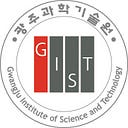Novel Protective Layer for Catalysts Developed by GIST Scientists Improves Life and Performance
The protective tetraphenylporphyrin layer prevents the degradation of inexpensive nickel–iron catalysts
Nickel–iron (Ni–Fe) catalysts are promising materials for the production of green hydrogen, but they are limited by the easy dissolution of Fe inside water-splitting cells. Now, scientists from Gwangju Institute of Science and Technology have developed a novel tetraphenylporphyrin protection layer for the catalysts that dramatically increases the life and performance of Ni–Fe catalysts.
Green hydrogen is hydrogen fuel that is produced using environment-friendly methods. Water electrolysis is one of the primary methods of producing green hydrogen. Here, electrical energy generated using renewable energy sources, such as solar panels or wind energy, is used to drive a water-splitting reaction in an electrochemical cell to produce hydrogen and oxygen. However, this reaction requires the use of expensive catalysts, which increases the cost of green hydrogen, making it unviable. Using nickel–iron (Ni–Fe) catalysts at the anode is a possible solution, but these catalysts tend to corrode and get deactivated due to the oxygen released at the anode of the water-splitting cell.
To address this issue, a team of researchers led by Professor Jaeyoung Lee of Gwangju Institute of Science and Technology, Korea created a protection layer for Ni–Fe catalyst that can increase their life and performance. According to Prof. Lee, “The major deactivation route for Ni–Fe catalysts is the dissolution of Fe at the oxygen emitting anode of the water-splitting cell. So, we developed an Ni–Fe-based catalyst with a tetraphenylporphyrin (TPP) protection layer. The TPP layer was able to minimize the dissolution of Fe during the oxygen evolution reaction and thus, increase the life and performance of the catalyst.” Their research was made available online on October 23, 2022, and was published in Volume 61 Issue 51 of Angewandte Chemie on December 19, 2022.
The research team found that the TPP layer was able to shield the Ni–Fe catalyst by creating a non-polar region around the catalyst, which significantly slowed down and reduced the dissolution of the unstable Fe atoms in the catalyst. The TPP protection layer was also seen to increase the redeposition of Fe atoms back on to the catalyst. These two effects combined to increase the life of the Ni–Fe catalyst. The researchers found that the TPP protected Ni–Fe catalyst was able to sustain high hydrogen production for prolonged periods.
“Water-splitting offers a solution to meet the Paris Climate Agreement goal of being carbon neutral by 2050, since water electrolysis doesn’t emit the carbon dioxide while producing hydrogen. But the price of hydrogen production using water electrolysis is still too high. This research can help us reduce the costs by using inexpensive, non-noble materials like Ni and Fe with a protection layer. This can lead us to a more sustainable future for all of us,” concluded Prof. Lee.
We hope to see the future of hydrogen fuel soon!
Reference
DOI: https://doi.org/10.1002/anie.202214541
Title of original paper: Durable Nickel-Iron (Oxy)hydroxide Oxygen Evolution Electrocatalysts through Surface Functionalization with Tetraphenylporphyrin
Journal: Angewandte Chemie
Authors: Sinwoo Kang (1,2), Changbin Im (3), Ioannis Spanos (4), Kahyun Ham (1,2,5), Ahyoun Lim (4), Timo Jacob (3,6,7), Robert Schlögl (4,8), and Jaeyoung Lee (1,2,5)
Affiliations:
- School of Earth Sciences and Environmental Engineering, Gwangju Institute of Science and Technology
- International Future Research Center of Chemical Energy Storage and Conversion Processes (ifRC-CHESS), GIST
- Institute of Electrochemistry, Ulm University
- Department of Heterogeneous Reactions, Max Planck Institute for Chemical Energy Conversion
- Ertl Center for Electrochemistry and Catalysis, GIST
- Helmholtz-Institute Ulm (HIU) Electrochemical Energy Storage, Ulm
- Karlsruhe Institute of Technology (KIT)
- Department of Inorganic Chemistry, Fritz Haber Institut der Max-Planck-Gesselschaft
Corresponding author’s email: jaeyoung@gist.ac.kr\
About the Gwangju Institute of Science and Technology (GIST)
The Gwangju Institute of Science and Technology (GIST) is a research-oriented university situated in Gwangju, South Korea. Founded in 1993, GIST has become one of the most prestigious schools in South Korea. The university aims to create a strong research environment to spur advancements in science and technology and to promote collaboration between international and domestic research programs. With its motto of “A Proud Creator of Future Science and Technology,” GIST has consistently received one of the highest university rankings in Korea.
Website: http://www.gist.ac.kr/
About the author
Jaeyoung Lee is a prominent professor at GIST. He obtained his doctoral degree in 2001 under Prof. Ertl at the Fritz Haber Institute of the Max Planck Society, Germany. His current research interests include fuel cells, electrolytic processes, and lithium-ion batteries.
